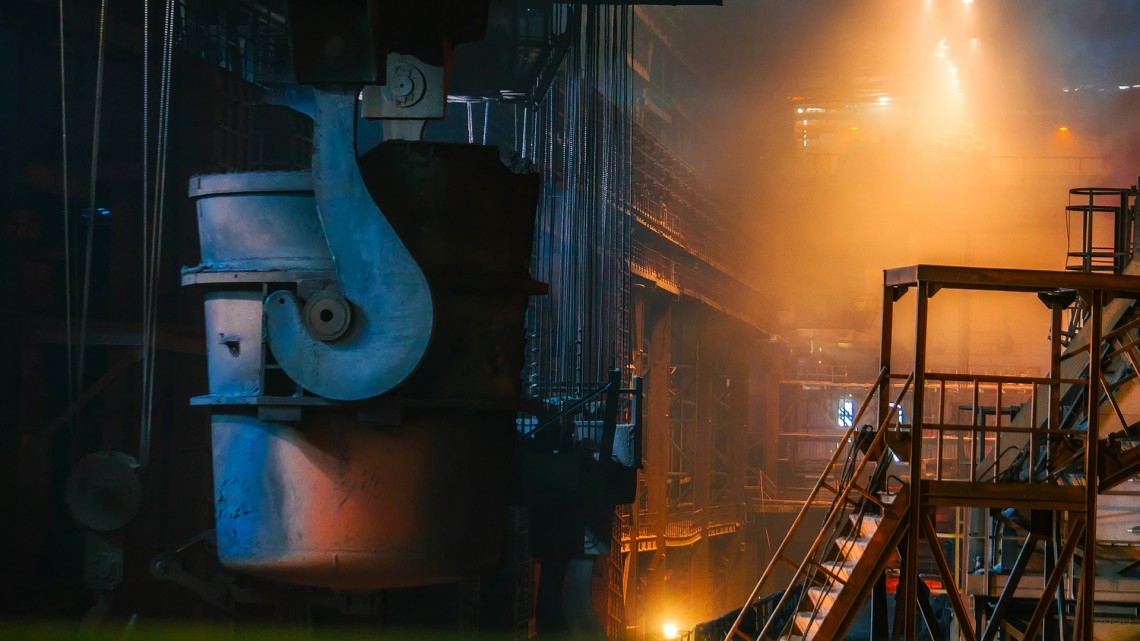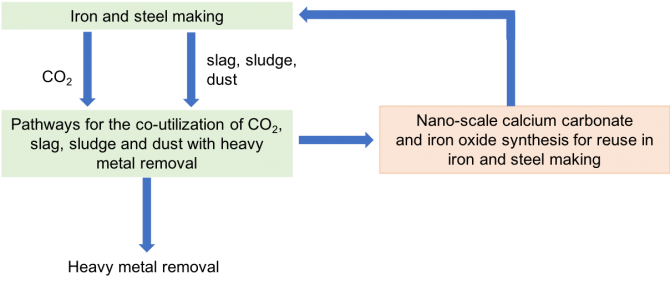
Inside a steel manufacturing plant.
News directly from Cornell's colleges and centers
$1.5M grant to explore integrated reuse of industrial waste, CO2
By Syl Kacapyr
Sludge, slag and other waste produced by the steel industry are not only hazardous to the environment, but can be expensive for companies to discard. A new research project led by Cornell will seek an integrated approach to turning that waste into valuable materials using a $1.5 million grant from the U.S. Department of Energy.
Steel production is a messy business. Blast furnaces reduce iron ore into pig iron, which is then converted into steel using a variety of processes and materials. Each step of the way produces a variety by-products such as flue dusts and slag – waste matter containing a mixture of chemicals and metals.
The steel industry has sought methods to reuse those by-products for steel and other manufacturing processes, however, efforts have mainly focused on treating waste materials independently of each other.
A group of academic and industry experts led by Greeshma Gadikota, assistant professor in the School of Civil and Environmental Engineering, proposes a new approach that would synergize the recycling of industrial steel waste by improving the recovery and quality of by-products using carbon dioxide generated during the iron and steel-making process. The research project is titled, “Integrated Reuse and Co-Utilization of Slag, Sludge and Dust With Inherent Heavy Metal Capture and Nanoscale Calcium Carbonate Production as an Enhanced Fluxing Agent in Steel Plants (INSIGHT)."
“Our interest is in developing holistic solutions that harness all the metal-bearing residues and carbon dioxide generated in iron and steel making processes to produce nano-scale calcium carbonate and iron oxide and remove heavy metals,” said Gadikota. “A key differentiator of this approach from existing pathways is the use of regenerable solvents for capturing carbon dioxide directly from flue gas to produce nano-scale carbonates at much lower temperatures in a process-intensified manner.”
The group, which includes investigators from Columbia University, research and development firm Reaction Engineering International, and engineering management company HATCH, will focus on three specific areas:
- The synthesis of uniform nanoscale calcium carbonate from slag using regenerable solvents. Uniform nanoscale particles can be used to enhance the reaction kinetics and predictability of steel manufacturing processes compared to the conventional use of limestone.
- Iron oxide recovered from the alkaline residues will be reused in the steel making process.
- Recovered silica will be functionalized to separate the undesirable metal constituents such as lead, copper, and nickel.
The team will investigate the overall material efficiency of steel manufacturing processes and reduce the amount of waste that needs to be treated and landfilled. There are other economic benefits, according to Gadikota, such as federal tax credits that reward companies for capturing and reusing carbon dioxide.
Members of the group have previously worked together to advance technologies for carbon-dioxide capture, conversion and storage, and hold several key patents that will enable the research funded by the new grant.
“This exciting project directly addresses our societal mission of meeting our resource needs in an environmentally sustainable manner,” said Gadikota. “Iron and steel use is ubiquitous in our infrastructure. INSIGHT is a unique opportunity to engage and train our students in developing innovative technologies that are central to our ability to live,” said Gadikota.
Media Contact
Get Cornell news delivered right to your inbox.
Subscribe

